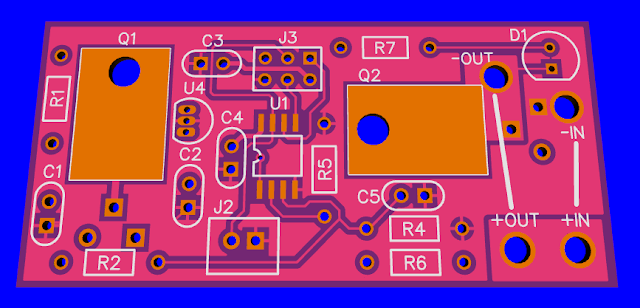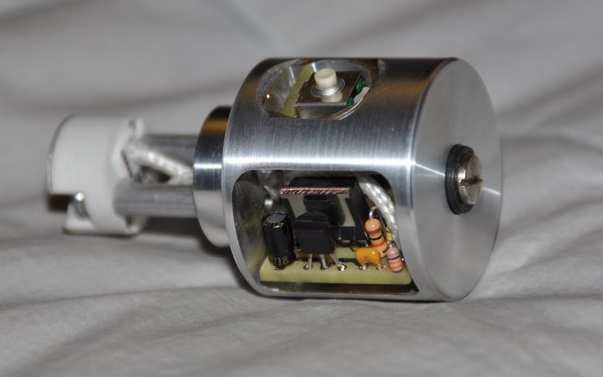Alan B
100 GW
For some time I've considered making a regulator to provide DC to my electric heated vest from the bike battery. It wants to see 12 volts (at about 50 watts), but a heating element doesn't care if the value is AC, DC, or pulsating DC. So a complex switching regulator with big heavy inductors and filter caps to produce clean DC is not needed. We have used this technique for incandescent filament voltage regulation as well (many postings on CandlePower Forums).
So I combined a couple of my designs and did a quick board layout.

It should handle up to about 10 amps at ebike voltages. For a heated vest (or other heated items) it can be set up to produce different RMS voltage settings for different heat outputs. There is a pushbutton input for selecting different levels, turning on/off, etc. For lighting such as running a motorcycle incandescent headlight it would be set to produce fixed 12-13V RMS. Those draw 60-100 watts so are in range of this regulator. Board is about 1.2 by 2.5 inches.
Here is the similar setup I made to fit in D M@gLite flashlights and handle mega-bulbs for high powered hotwires (up to about 12-15 amps) a few years ago. It is the same diameter as a "D" cell battery, to give an idea of the scale.:

So this approach saves bulk, weight and power as compared to the standard approach of a DC-DC converter, and it avoids a second battery and the attendant monitoring and charging of that approach.
So I combined a couple of my designs and did a quick board layout.

It should handle up to about 10 amps at ebike voltages. For a heated vest (or other heated items) it can be set up to produce different RMS voltage settings for different heat outputs. There is a pushbutton input for selecting different levels, turning on/off, etc. For lighting such as running a motorcycle incandescent headlight it would be set to produce fixed 12-13V RMS. Those draw 60-100 watts so are in range of this regulator. Board is about 1.2 by 2.5 inches.
Here is the similar setup I made to fit in D M@gLite flashlights and handle mega-bulbs for high powered hotwires (up to about 12-15 amps) a few years ago. It is the same diameter as a "D" cell battery, to give an idea of the scale.:

So this approach saves bulk, weight and power as compared to the standard approach of a DC-DC converter, and it avoids a second battery and the attendant monitoring and charging of that approach.

